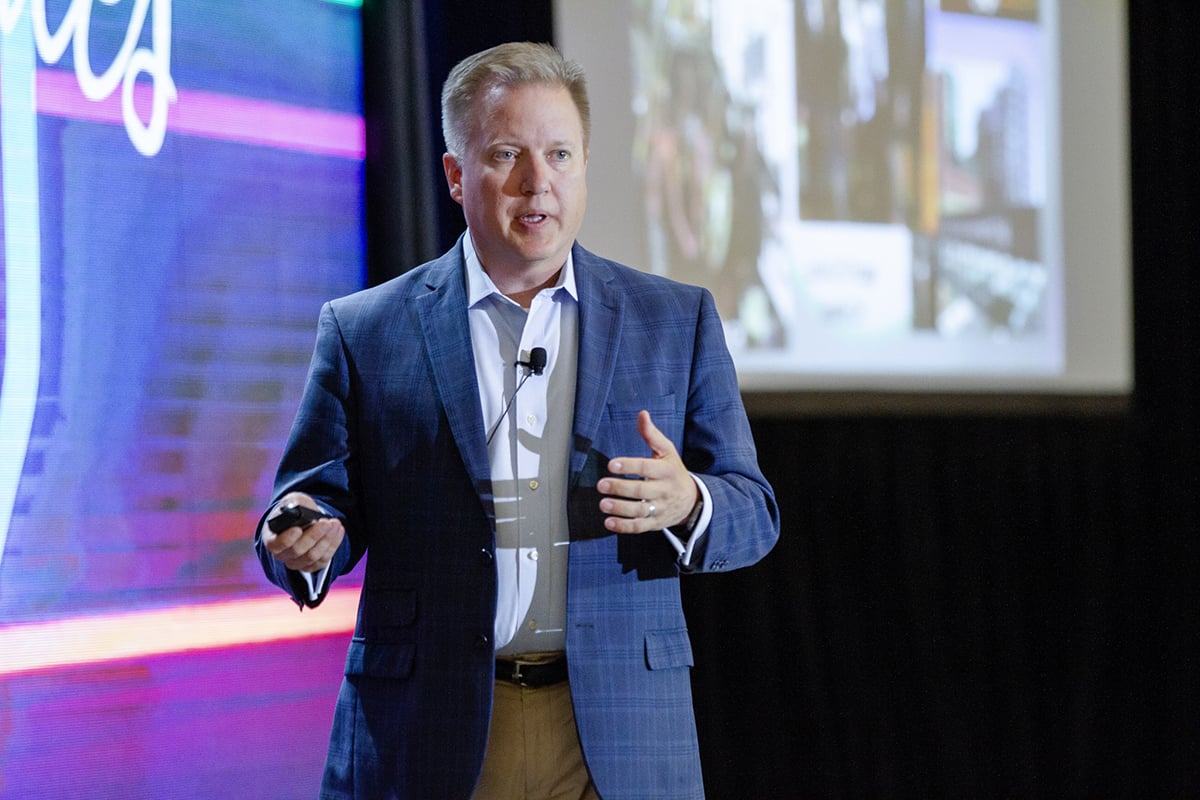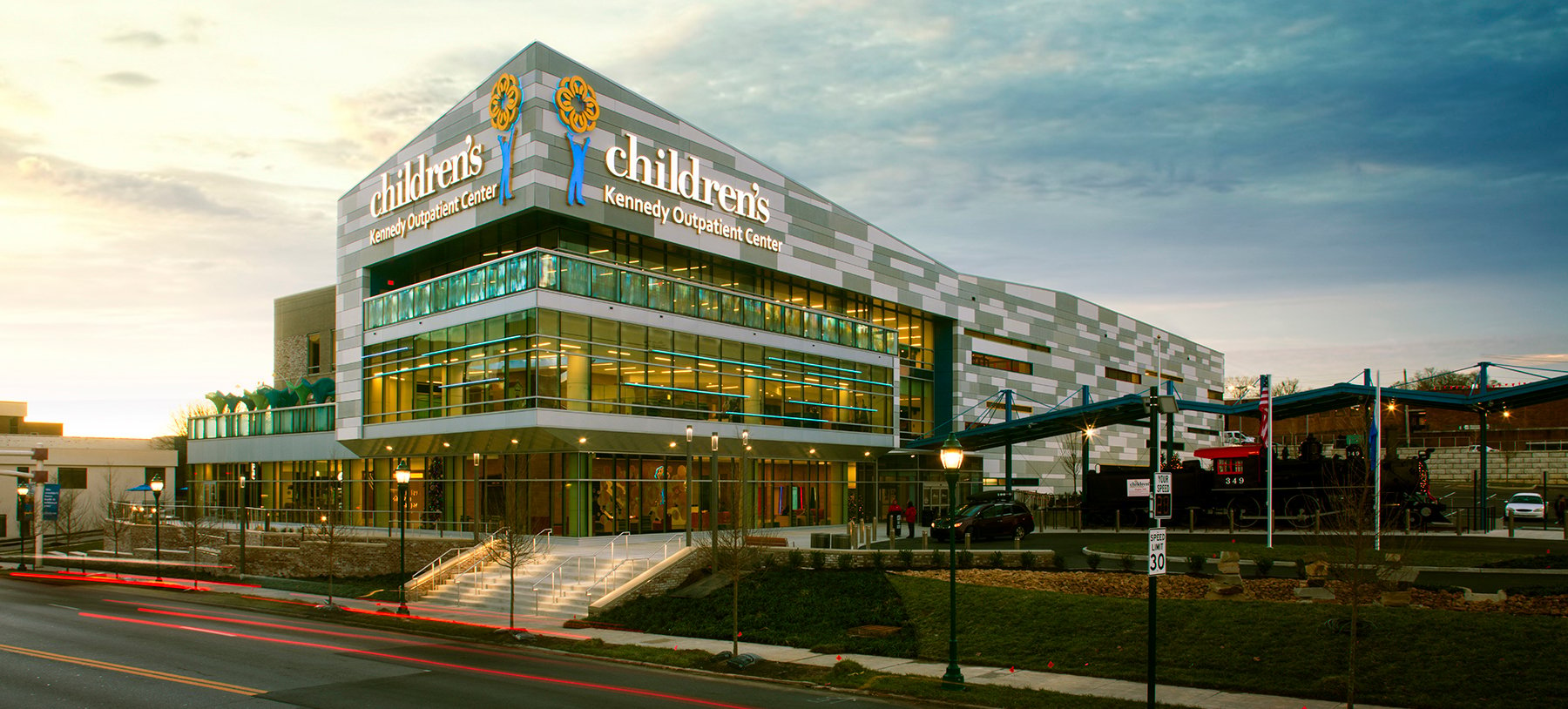The Erlanger Health System in Chattanooga, Tennessee has a brand-new outpatient facility, the Children's Hospital at Erlanger Kennedy Outpatient Center. And just as it takes a village to raise a child, it took a community to raise this pediatric center.
Don Mueller, CEO at Children’s Hospital at Erlanger, explained how they were able to make this dream a reality at HealthSpaces.
Everyone thought they were crazy: in 2015, Erlanger was the country's seventh-largest public hospital system and received very little—if any—philanthropic support. So when the idea of building a new outpatient pediatric center was raised that year, no one thought it would happen.
But they persisted. Under the new leadership of CEO and President Kevin Spiegel, Erlanger grew from $600 million to $1.2 billion from 2013-2018, doubling in a flat market. And through a fundraising strategy that emphasized community engagement, the hospital system was able to raise the $42 million for the new outpatient facility—starting from absolute 0—and get it open to the public in less than four years.
A Simple Five-Point Plan
As Mueller explained, they came up with a simple strategy to make this new outpatient center a reality and outlined it in five points: first, select the right team. Second, develop a "Vision and Guiding Principles" statement. Third, benchmark with the best. Fourth, engage the entire community and create something unique. And, finally, celebrate your successes and enjoy the process.
Before they selected their building partners, they put out a request for proposals for design and construction, screened 25 of the top-qualified firms in the United States, and then told those firms partner up and come up with something. The design and construction teams came together and spent several days in Chattanooga, while Erlanger staff also visited them in their respective offices.
"We were really looking for a cultural fit," Mueller said of the design and construction teams, so it was important to them that everyone—architects, builders, and Erlanger staff—spent time together and got to know each other. The teams developed their ideas, Erlanger narrowed it down to their top two choices, and those teams presented their concepts in IMAX to the whole city of Chattanooga to help the hospital get buy-in from the local community.
"We needed to raise $40 million to build this building that was nothing but a dream, so we had to get the community involved," said Mueller. "We had to raise excitement in the community. People were skeptical but they got engaged through this event."
Erlanger developed their guiding principles with input from their own medical staff and people in the community. Mueller said that they didn't want to just do an actuarial analysis; they wanted to build something unique to Chattanooga and also make it universally appealing. Because they treat children all the way up to age 21, they didn't want it to just be a little kid's hospital full of cartoons—they wanted it to also appeal to an 18-year-olds coming in with football injuries.
Design Brings the Outside Inside
In terms of design, they wanted it to be a place full of "discovery zones" instead of waiting rooms, so that people could be engaged and learn instead of just sitting and waiting. Chattanooga is known as an outdoor lover's paradise—Outside Magazine named it one of the best towns to live in the U.S. twice—so they wanted to incorporate architectural and landscaping features that reflected the natural environment of southeastern Tennessee.
They visited other children's hospitals across the country as part of their "benchmarking" and asked them about the best things they've done as well as their biggest mistakes and failures.
"The coolest thing about children’s’ hospitals is that we tell each other these things," Mueller said. "There’s no such thing as competition when you're dealing with sick kids."
The resulting design is a culmination of several different inputs. This includes shared everything—no longer would one department be in desperate need of beds while another sat half-empty—including waiting areas, flexible treatment rooms and clinic pods, and identical exam rooms that can be used for any purpose, adding 30 percent more capacity through these shared spaces. They also eliminated private offices for the doctors—a cultural transformation that took strong leadership and continued engagement to get staff to support. This decision enabled them to build 72 exam rooms instead of just 40.
Because they were building 72 exam rooms they wanted to make sure they got them right, so they held three stage mockups for doctors, nurses, friends and family, and other stakeholders to give their input. They also led hardhat tours for stakeholders every week throughout the whole construction process.

"The mock-ups were used as a way to get the community engaged," he said. "We built a mock exam room and took it on our road show and even had it at our big gala. We had a donor community that’s never been involved with us at a gala we’ve never had before and we were showing them how we’re going to transform pediatric healthcare."
Getting the Community Excited
But the community also needed to see, understand, and get excited about their vision of healthcare transformation. In order to do that, they needed to do something to spark that excitement and create something unique for the community. So they visited one of Chattanooga's most iconic family attractions: the Tennessee Valley Railroad Museum. And they asked the folks at the museum, "How do we get people excited?"
As it turns out, having a train certainly helps. They were able to work with the museum to get a steam train that was built in 1891 on permanent loan, and that is now the signature feature of the building. When people pull up to the main entrance, they're not pulling up to a hospital: They're pulling up to a train station.
Additionally, the famous outdoor Chattanooga attraction known as Rock City funded a "secret garden" on an outdoor patio, there is a hang glider suspended from the ceiling in the lobby (paying homage to Chattanooga's status as one of the top hang-gliding destinations in the country), and Erlanger worked with the local fire department to bring a fire truck cab into the building.
"[We] need these kids distracted. [We] need them ready to be able to engage with the doctors or nurses and not be scared," Mueller stated. "If you get dropped off at a medical office building you’re not in a good spot, but if you get dropped off at a train station or get to play in a fire truck, you're much more ready to talk to the doctors."
And it's not just about having cool stuff for the kids: Getting involved with these community partners also increased community buy-in. The fire department helped the hospital in their fundraising efforts, which helped get the community excited and build momentum. The day the 80-ton train was moved across town to be placed at the hospital was another big community engagement day.
The center became such a community passion that even the construction team hired to build it went out and did fundraisers of their own, writing a check to the hospital for $24,000. In total, over 6,000 people wrote checks to support this project and raised $42 million to see it completed, and that was absolutely because of Erlanger's level of community engagement—certainly a success they can celebrate.
"The most important thing was to get the feedback from the community and figure out how we could make this something really special for the community. We're trying to do something that’s going to impact our city for years to come," said Mueller. "It’s not just about building a building: It’s about transforming the way we deliver care."
Join us at HealthSpaces'19 to learn more about the latest innovations in healthcare facilities planning, design, construction & operations.

Posted by
Collaborate with your Peers!
HealthSpaces is a community for people that plan, design, build and operate spaces where healthcare is delivered.
June 7-9, 2026 | Braselton, GA
Learn More




-4.png)
-Dec-09-2025-05-48-44-4379-PM.png)
-4.png)
-1.png)
-2.png)

Comments